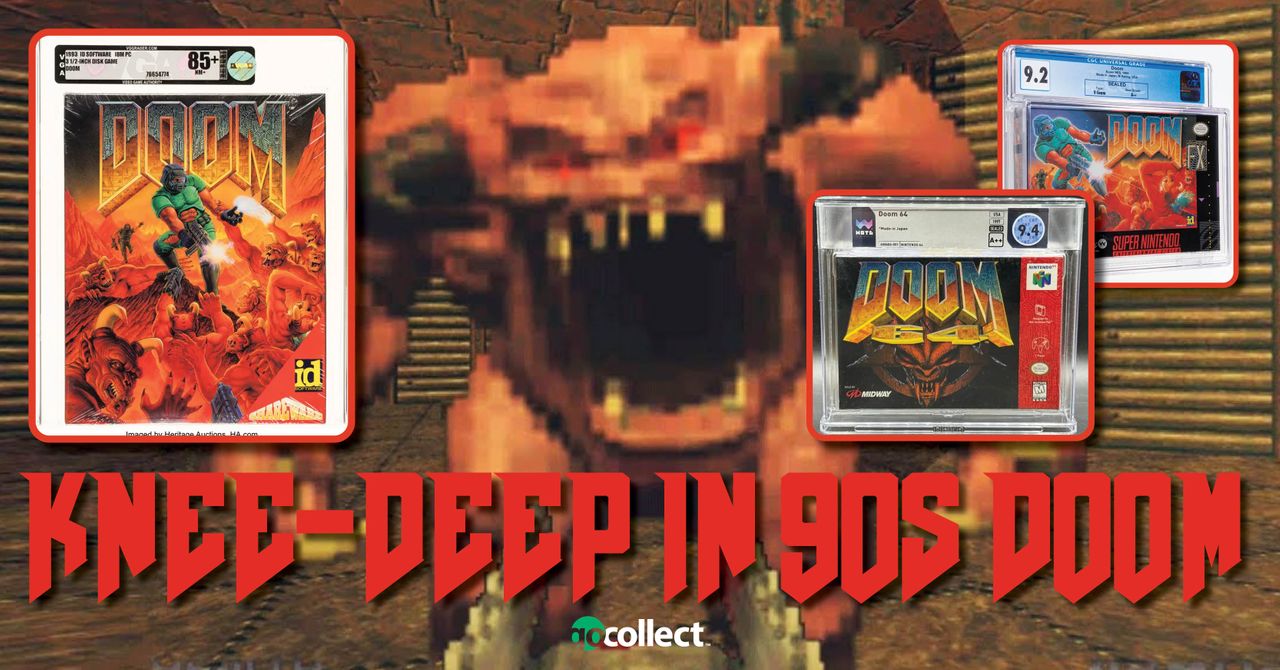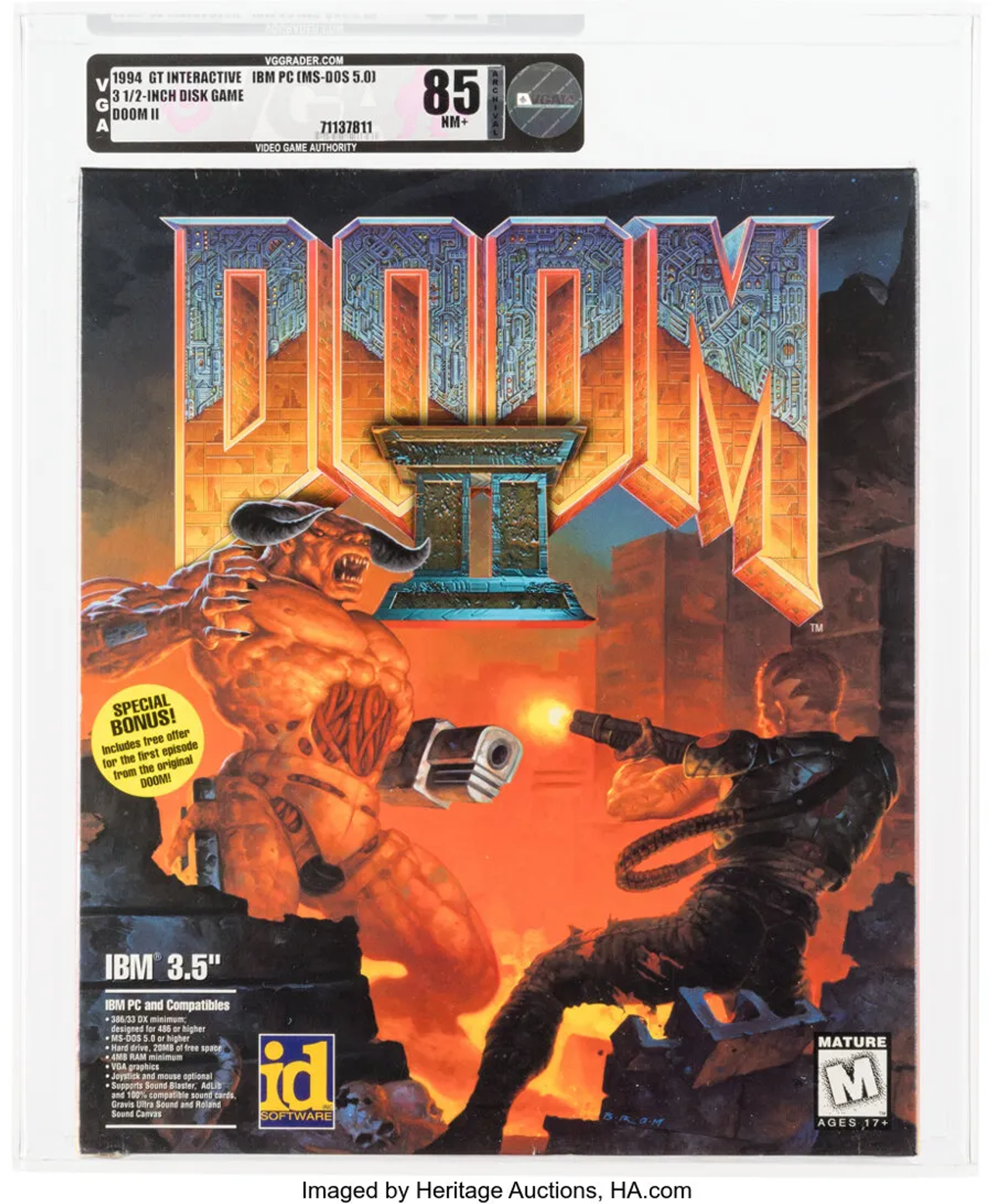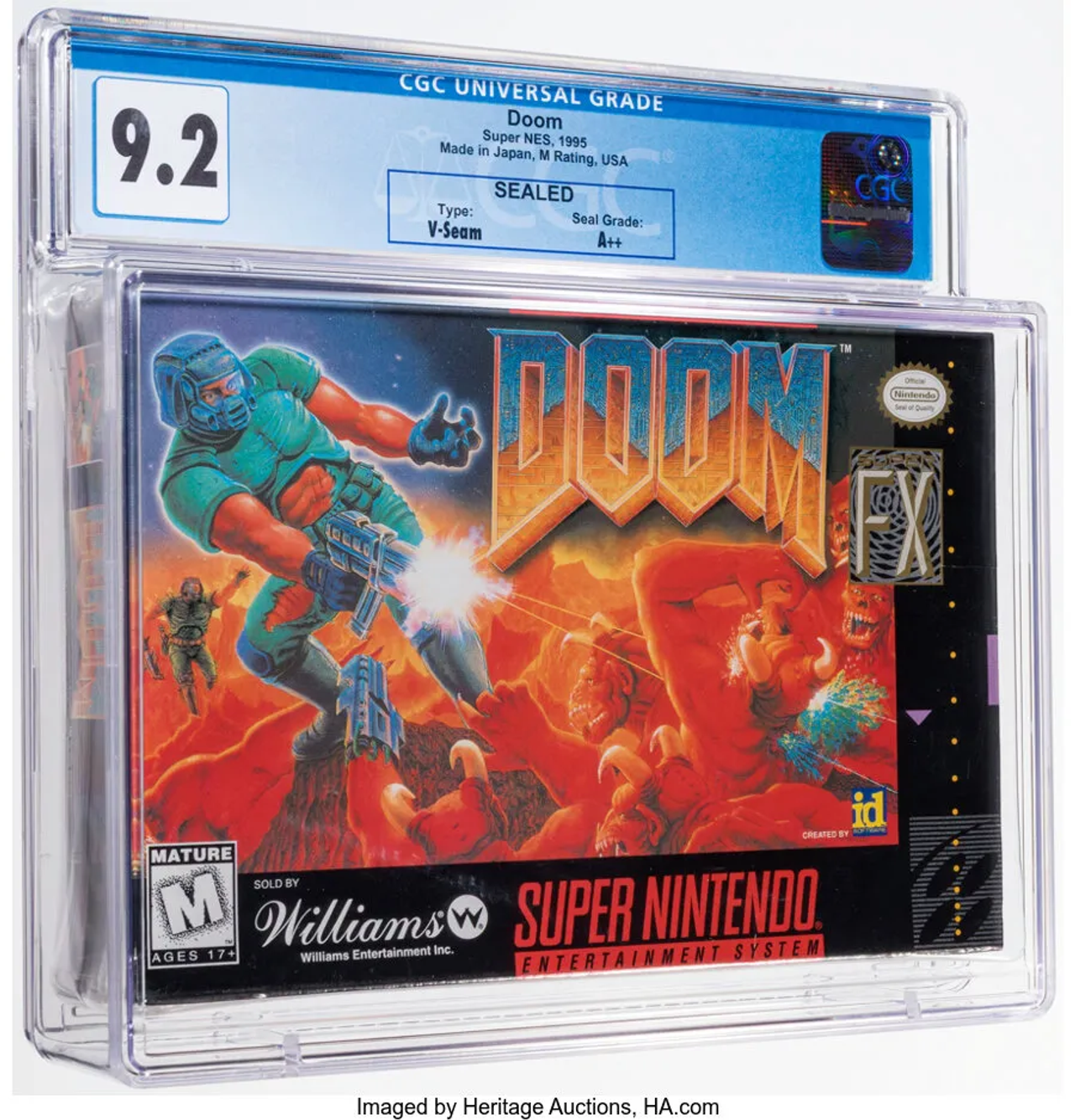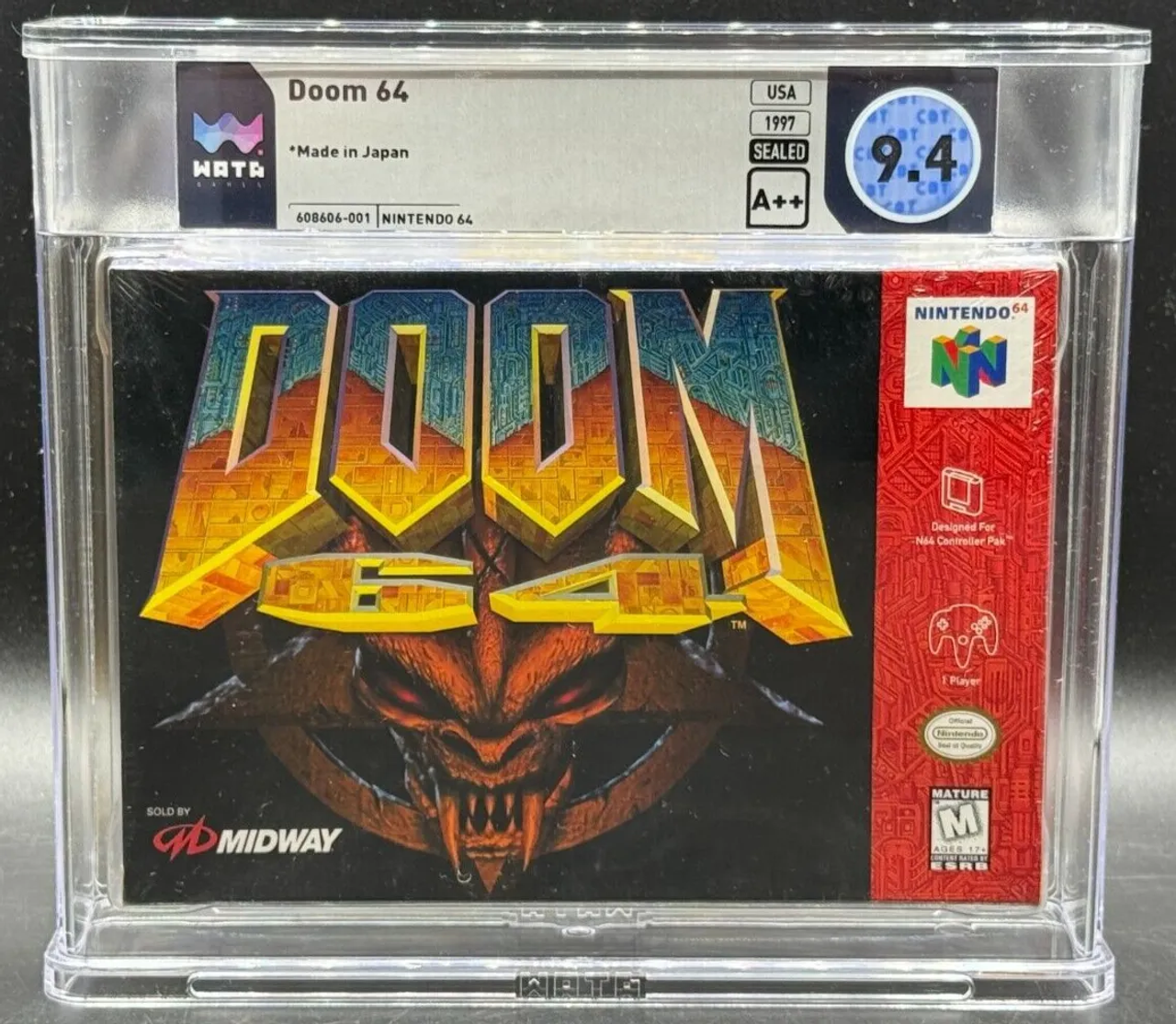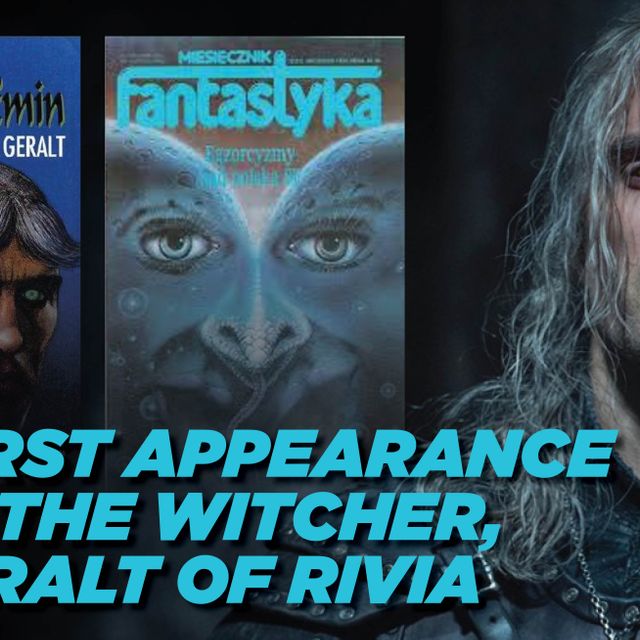The Arrival of Doom
When Doom released in December 1993, developers id Software knew they had an instant classic on their hands. The unbelievable extent of the influence that the title would have over gaming as a whole, though, couldn’t have been predicted by anyone. Within a year, a “Doom clone” genre had emerged, and Doom’s influence was felt across just about every genre, from adventure games to RPGs.
Doom wasn’t the first game to use textured 3D environments and a first-person perspective – Ultima Underworld had done it a year earlier – nor was it the first FPS, but its impact was so seismic that it became synonymous with first-person action.
“Doom clones” would eventually become known as First Person Shooters, and thus one of the most popular videogame genres of all time was born – and even today, they still owe it all to Doom.
The DOS Games
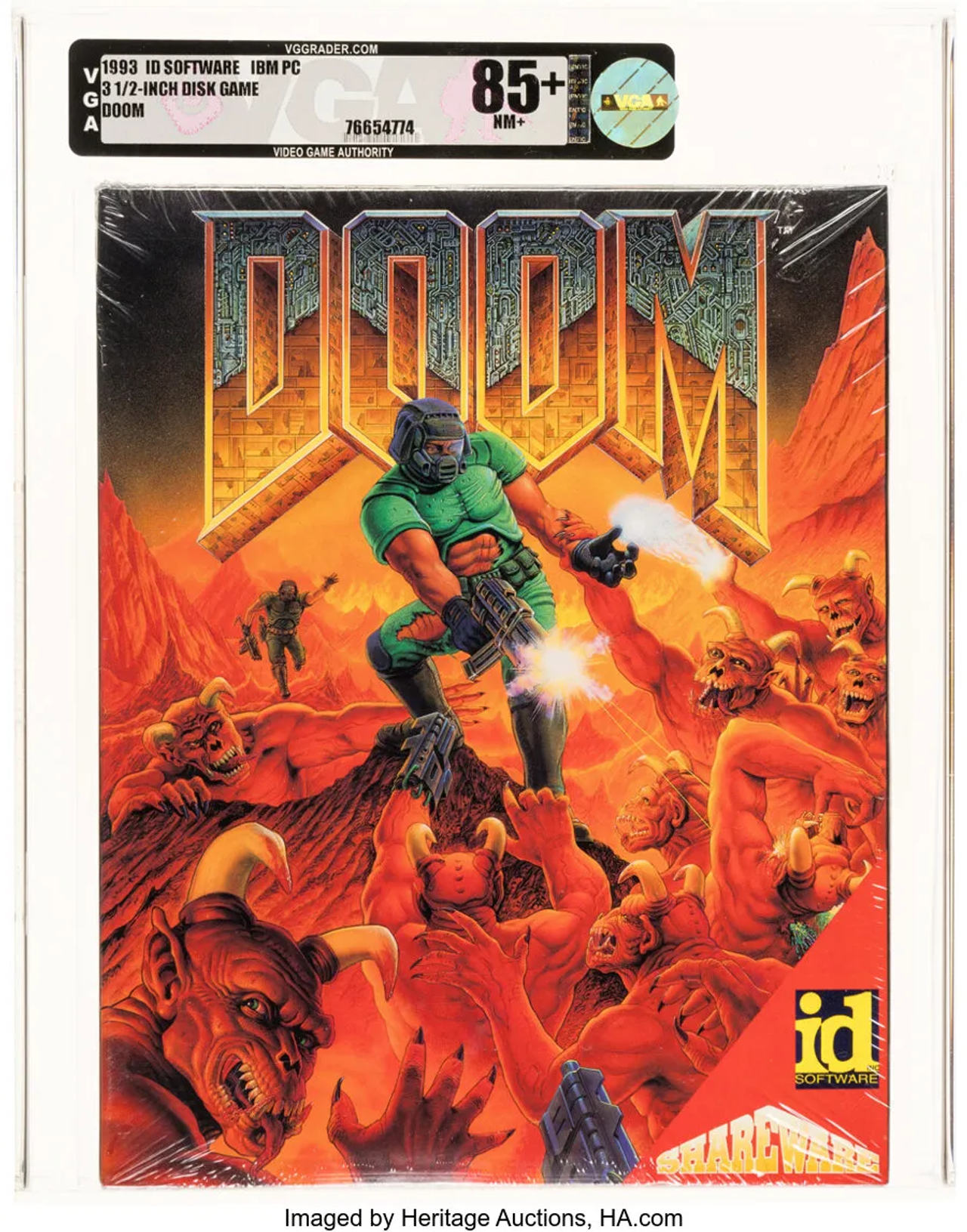
When it comes to Doom collecting, one video game boxed is prized above all others – the original 1993 shareware edition. Containing the first episode (“Knee-Deep in the Dead”), it is the holy grail for collectors. The box features artwork that has become utterly iconic. One sealed copy graded 85+ Near Mint by VGA sold for $5750 in February 2025. Another sealed copy with a lower rating of 75 sold for $1247 in August 2024, showing the great difference in price for just 10 VGA rating points. As with all old PC games, condition is key – these cardboard “big boxes” were gorgeous, but don’t always hold up to wear and tear well.
Any box bearing the signature of level designer John Romero adds a lot of value - sometimes around a thousand dollars. One sealed copy in Near Mint condition bearing his autograph went for $6710 in September last year.
Original copies of Doom II, released on PC in 1994, generally sell for less than the original Doom. One exceptional sale did occur on eBay in November 2024, where a Near Mint sealed copy went for $7000. This was a rare standout sale, copies generally sell for far less.
Original CD-Rom copies of Final Doom rarely come up for auction and sell for much less than the original Doom. The compilation is somewhat infamous – it features two very lengthy campaigns made by fan teams, and to say that reaction to these was mixed is an understatement. Both are known for punishing, often unfair difficulty. Still, Final Doom has its fans, and for anyone collecting the full range of Doom titles, it’s a must-have. Even sealed copies in Near Mint condition might only fetch a few hundred dollars, making it a good point of entry for anyone with limited cash.
There is also The Ultimate Doom, a re-release of the original that contains an additional fourth episode. Some releases included the first episode of Raven Software’s Heretic on the same disk, an early “Doom clone” that, in many ways, was even better than Doom. Really, try it - it's been written off as "fantasy Doom" for far too long, considering it added an inventory system, alternate weapon modes, a beautiful dark fantasy atmosphere, and much more.
Console Ports
The original Doom was ported onto practically every available console at the time. These days, it’s become a meme to see what you can get Doom running on – graphic calculators, ATM machines, printers, and just about everything else with a screen.
The SNES port remains one of the most collectible. It was one of only three games on the system to receive the M for Mature rating (the other two both being Mortal Kombat ports). A sealed 9.2-graded copy sold for $688 in April. As ever, a few points in grading can make a big difference – a sealed 9.8 went for nearly $2000 in March.
The GameBoy Advance port of Doom is another interesting case and a fascinating technical achievement from the earlier days of handheld consoles. An unsealed but CIB (complete-in-box) copy rated 9.4 recently went for $300. Sealed copies with ratings of near mint or better have been known to go for around $2000-$3000.
Another unique case is the PS1 port, which merged Doom and Doom II and made several other changes. It’s perhaps most well known for changing the beloved original soundtrack for something far more eerie and atmospheric, wildly changing the game’s tone, giving it a desolate, almost horror-tinged vibe.
But of course, arguably the best early Doom game for consoles was Doom 64, Nintendo’s exclusive sequel released in 1997. This version was not a simple port of the DOS game, but a whole new game with new visuals, new levels, and new music. A sealed 9.4-rated copy went for $700 in April 2025, while a sealed 8.0 sold for $350 in March 2025.
Final Thoughts
The enduring popularity of Doom is a testament to how well a simple formula can work – put the player in a cool-looking place with demons and weapons, and you really can’t go wrong.
The modern Doom titles are still going strong, with Doom: The Dark Ages releasing earlier this year to solid reviews. As good as they are, none of the modern games have yet recaptured the unbelievable thrill those of us who played the original as kids got. Smashing through the hordes of hell with a flail is good fun, but being hunted relentlessly through those blocky corridors was an experience like no other.
As with all old “big box” PC games, original copies are becoming rarer, especially pristine ones. These represent big long-term investments, and in the meantime, look great in any collection.
